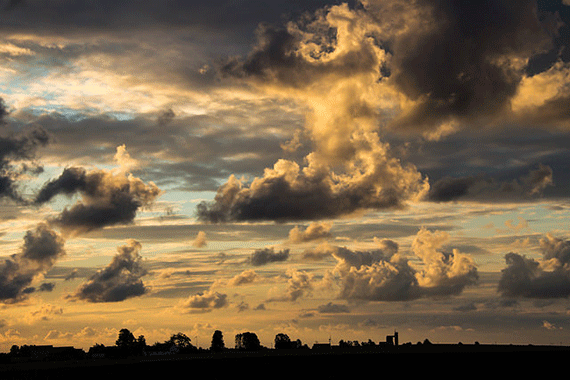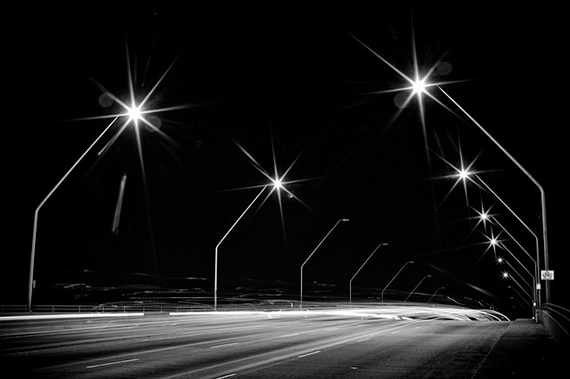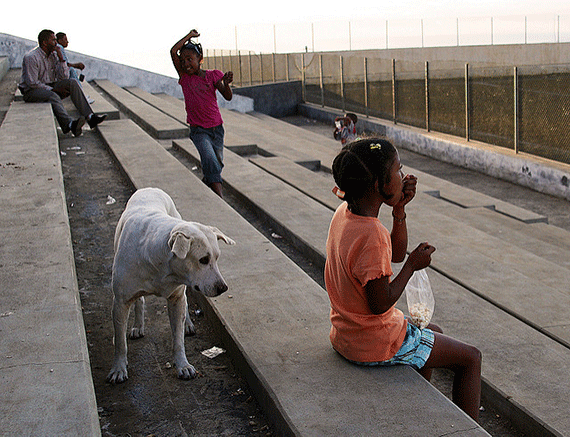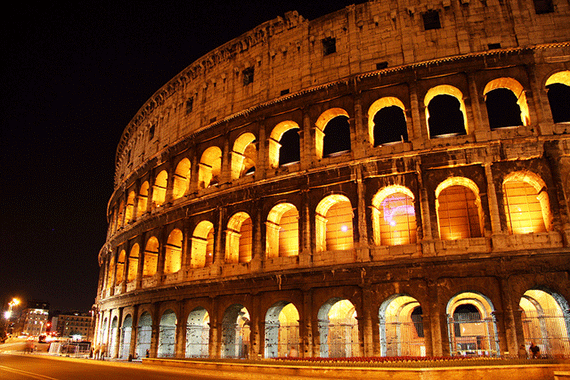How is an exposure made and what does the camera do to make sure an image is recorded? There are two parts involved in exposing film or a digital sensor to light. One is the intensity of the light and the other is the length of time the light is allowed to strike the film or sensor. Exposure= intensity x time. Above the door in my photography class was this sign: E=IxT. Some students thought it meant EXIT.

Photo by Susanne Nilsson; ISO 100, f/9.0, 1/250-second exposure.
The f stop (aperture) is the iris in the lens that allows a measured amount of light to strike the film. This f stop is determined mathematically by the size of the iris opening of the lens, the lenses focal length, and the dimensions of the film or sensor. It is a factor of these three things, so the name f (factor) stop. Each “stop” either doubles or halves the amount of light allowed through the lens. In the old days each stop was a click on the lens. You could look through the lens and see the iris opening and closing as you rotated the dial. Now, most camera lenses are calibrated into thirds of a stop so instead of f stop numbers of 2.8, 4, 5.6, and 8 (which are full stops) you have stops like 4, 4.5, 5, 5.6, 6.3, 7.1, 8 (which divides each stop into thirds. F 4 means that basically the hole on the lens is ¼ the length of the lens. F 8 means the hole in the lens is 1/8 the length of the lens. Remember, an f stop is a factor and the bottom part of a fraction.
One of the confusing parts of f stops is the larger the number the smaller the opening. If you think… a hole that is 1/8th the length of the lens is smaller than a hole that is ¼ the length of the lens. Using a plumbing analogy, a ¼ inch pipe will allow more water through it than an 1/8th inch pipe as long as the water pressure is the same.

Photo by Thomas Hawk; ISO 100, f/16.0, 20-second exposure.
The other part of an exposure is the amount of time that the film or sensor is exposed. The longer the shutter is open, the longer the light has to expose the film, the shorter the shutter is open, the less time there is to exposed the film. Where the job of the lens is to measure and focus the light the job of the camera is to open and close the shutter and record the image. Just like with the lenses “stops” the shutter also has stops. In the old days (again) each shutter speed was a click stop. Each stop was either twice as long or half as much time. Shutter speeds were like 1/30th, 1/60th , 1/125th, 1/250th of second.
These represented halving the amount of light one direction and doubling it the other. Modern cameras shutters are now calibrated in thirds of a stop so you have shutter speeds like 1/30, 1/40, 1/50, 1/60, 1/80, 1/100, and 1/125th of a second. Now the reason both f stops and shutter speeds are broken down into thirds of a stop is to allow for a more accurate exposure. In the old days you had to fudge between the click stops for a more accurate exposure.

Photo by David Trainer; ISO 400, f/5.0, 1/400-second exposure.
Now if you look carefully you’ll see a relationship between f stops and shutter speeds. Each full f stop either halves or doubles the amount of light entering the camera and each full shutter speed stop either halves or doubles the amount of time of the exposure. Modern cameras automatically do this for you. It is possible to have the same exposure with a variety of different f stops and shutter speeds depending on what effect you want to achieve. If you are in aperture priority and change the f stop the shutter speed automatically changes for a proper exposure; if you are in shutter speed priority and change the shutter speed the f stop automatically changes for a proper exposure. Since you don’t have to manually change both factors of an exposure with modern cameras new photographers that have a hard time understanding this relationship. Couple that with the fact that exposures are now broken down into thirds of a stop, trying to explain it all seems an exercise in futility.
So I know what you are wondering, if the camera automatically does this for me why should I care what my f stop or shutter speed is and, more importantly, why did you waste my time trying to explain it? Well, knowledge is power. Shutter speeds stop action or blur it depending on how fast or slow of a speed you use. Aperture controls depth of field (a property of optics that renders sharpness to a given area). You use this to isolate subjects or create images that are perfectly sharp throughout. If you let the camera do everything for you you get average images and you don’t learn anything.

Photo by Luke Price; ISO 200, f/4.0, 2-second exposure.
If you want to stop action you now know you have to use a fast shutter speed and lose some depth of field. (Every time you use a faster shutter speed which cuts the length of time the film is exposed to light, you need to open up the aperture to let more light in.) If you want everything in your photograph to be sharp you know you have to use a small aperture (high number) and you might have to put your camera on a tripod because you will need a slower shutter speed for a proper exposure. (Since only a little light is being allowed to pass through the lens you need to slow down the shutter speed and allow the film to be exposed for a longer time.)
If you want to learn how to have more control over how your photographs turn out look in your cameras owners manual and see how to access shooting modes and reread my article on shooting modes to refresh your memory. Many cameras have these shooting modes on a dial on top of the camera for easy access. By accessing these shooting modes you can fine tune your images and start to improve your photography.
About the Author:
Gene Rodman received his photography degree from Sierra College in California where he was named outstanding photographer of the year in 1992 (mtphotoarts). He has always had an interest in photography and after experiencing the beauty of Yosemite as a teenager realized what an amazing affect nature had on him. He has traveled extensively throughout the western United States and taken many photographs to record the adventures.
Like This Article?
Don't Miss The Next One!
Join over 100,000 photographers of all experience levels who receive our free photography tips and articles to stay current:






cant you just simplify it a bit more like the direct answer as to what the difference is?
One really useful exercise is to work all the way through the f stops, speed and ISO settings on your camera changing them one at a time and yet maintaining the picture exposure the same. I took about 300 pictures in this exercise and it really does drive home the ‘exposure triangle’ and how each element is linked to the other. Thanks for this great article.
You write “This f stop is determined mathematically by the size of the iris opening of the lens, the lenses focal length, and the dimensions of the film or sensor”
but surely the dimensions of the film or sensor have nothing to do with f stop, for any lens f2.8 is f2.8
Absolutely correct – the definition is f-stop = focal length / lens diameter and that clearly does not change because the sensor grows smaller or larger. The light per unit area at the image plane is strictly a function of lens diameter and focal length whether or not there is even a sensor there to register the image. Of course you have to use the real focal length and not “effective focal length.”
What would also be helpful would be exposure info under the sample photographs, so we can see what f-stops and shutter speeds were used to create these beautiful images.
Very helpful, but I agree with Anna. Some specific f-stops and shutter speeds would be additionally helpful.
I agree with what you have to say, playa.
I am dyslexic and get confused easily by all of this. I wish someone would give specific f-stops and shutter speeds to practice under various conditions. I am sure that would help me.
Thank you for the detailed explanation of f-stops and shutter speeds. So helpful!
Thanks, this was a very helpful article to read. I like to understand what the camera is actually doing, and I am trying to start taking some control over how my photos turn out.
Your article about shutter speed and fstops is excellent. Personally I need to review these basic concepts because I tend to forget them and in my opinion I need to know and use that knowledge when photographing. Basics are always important! Everett, NY